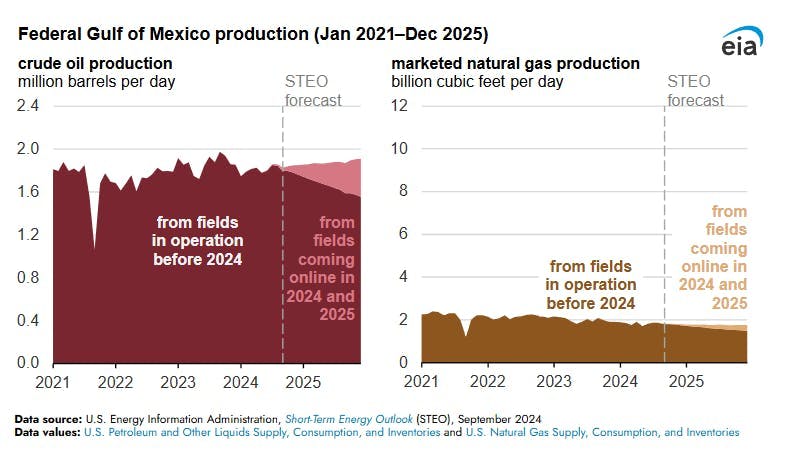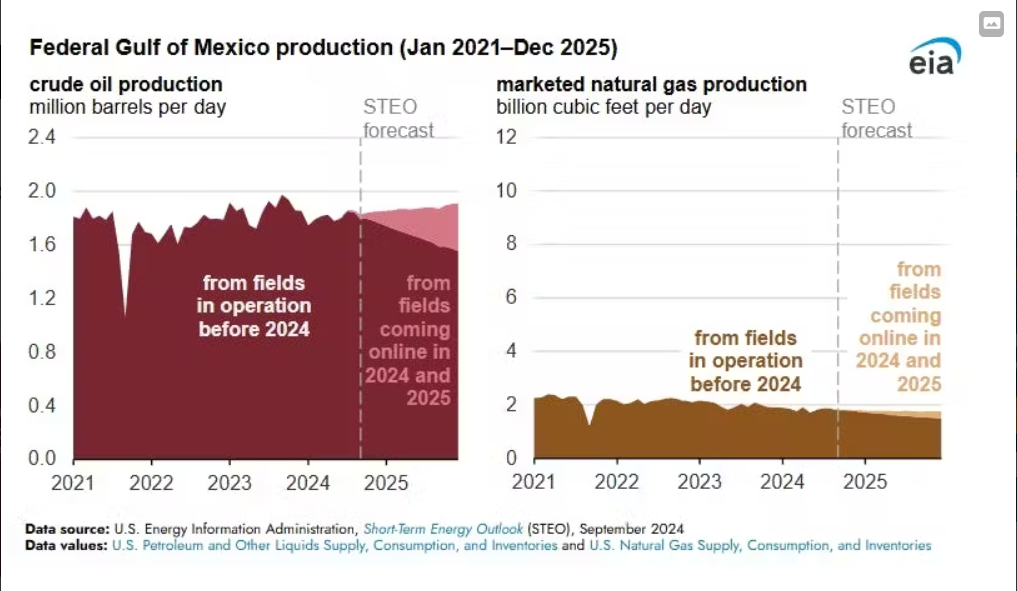Development of New Fields in the US Gulf of Mexico to Offset Production Decline

The U.S. Energy Information Administration (EIA) has issued a forecast indicating that the development of new fields in the Gulf of Mexico (GoM) will play a crucial role in offsetting the natural decline in oil and gas production from existing fields. This strategic initiative aims to maintain production levels steady in the region, especially as declining production from aging wells continues to impact overall output.
### Key Points from the EIA Forecast
1. **Production Levels in 2024 and 2025:**
– The EIA forecasts that crude oil production in the GoM will average 1.8 million barrels per day (b/d) in 2024 and 1.9 million b/d in 2025. This is compared to 1.9 million b/d in 2023.
– Natural gas production is expected to average 1.8 billion cubic feet per day (Bcf/d) in both 2024 and 2025, compared to 2.0 Bcf/d in 2023.
2. **Contribution to US Energy Market:**
– The GoM’s contribution to the U.S. oil market is projected to remain around 14% while its contribution to the U.S. marketed natural gas production is expected to be about 2%.
3. **New Field Developments:**
– The EIA expects 12 new fields to come online in the GoM during 2024 and 2025. These new fields will significantly impact the regional energy landscape by offsetting production declines from existing wells.
– Seven of these new fields will be developed using subsea tiebacks, connecting newly discovered reservoirs to existing Floating Production Units (FPUs) at the surface. Four new FPUs will also be commissioned, each capable of producing crude oil and natural gas from five additional fields.
4. **Crude Oil Contribution:**
– Fields that have already started production in 2024 are expected to contribute 22,000 b/d of crude oil production in that year. As more fields ramp up to full production in 2025, the combined average daily output from all newly developed fields is projected to reach 231,000 b/d.
### Implications for the Industry








